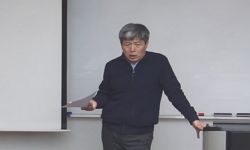옛길은 2007년 문화재의 범주에 포함된 이후부터 현재까지 문화재로 지정하는 단계에 그쳤으며 관리나 활용의 분야에서는 별다른 움직임이 없었다. 최근 연구에서 문화재로 지정된 옛길 활...
http://chineseinput.net/에서 pinyin(병음)방식으로 중국어를 변환할 수 있습니다.
변환된 중국어를 복사하여 사용하시면 됩니다.
- 中文 을 입력하시려면 zhongwen을 입력하시고 space를누르시면됩니다.
- 北京 을 입력하시려면 beijing을 입력하시고 space를 누르시면 됩니다.
옛길의 보존관리 및 보호활용 개선방안 연구 = A Measure on the Improvement of Conservation, Management, Safeguarding and Utilization of Old Road
한글로보기https://www.riss.kr/link?id=T15885555
- 저자
-
발행사항
서울 : 한국전통문화대학교 일반대학원, 2021
-
학위논문사항
학위논문(석사) -- 한국전통문화대학교 일반대학원 , 문화유산융합학과 문화재관리학 전공 , 2021. 8
-
발행연도
2021
-
작성언어
한국어
- 주제어
-
발행국(도시)
충청남도
-
형태사항
; 26 cm
-
일반주기명
지도교수: 최종호
-
UCI식별코드
I804:44031-200000508052
- 소장기관
-
0
상세조회 -
0
다운로드
부가정보
국문 초록 (Abstract)
옛길은 2007년 문화재의 범주에 포함된 이후부터 현재까지 문화재로 지정하는 단계에 그쳤으며 관리나 활용의 분야에서는 별다른 움직임이 없었다. 최근 연구에서 문화재로 지정된 옛길 활용프로그램 개발이 진전되었으나 그 실행은 미비하였고 옛길을 문화재로 지정 후 보존관리나 보호활용에 관한 통합적 연구나 방향이 없다는 문제를 발견하였다. 따라서 옛길의 보존관리와 보호활용 개선에 관한 연구의 필요성이 제기되었다.
본 연구는 옛길의 보존관리 및 보호활용의 이론으로 국제협약인 이코모스 버라 헌장과 이코모스 문화루트 헌장에서 길 유산의 인식에 대해 고찰하였고, 국내의 옛길 관련 법령과 제도를 검토하였다. 보존관리 및 보호활용의 현황파악을 위해 국제협약인 이코모스 문화루트 헌장에서 제시된 문화루트 관리를 위한 방법론을 분석틀로 국내·외 옛길의 보존관리 및 보호활용을 비교분석하고 개선방안을 제시하고자 하였다.
옛길은 오랜 역사성과 인간의 문화적 과정으로 형성된 유형과 무형의 요소를 지닌 지역 고유의 유산이다. 문화루트가 인간의 문화적 과정이 쌓인 길이라는 점에서 옛길과 일부 정의를 동일시하였다. 이코모스의 문화루트 헌장의 방법에서 제시된 관리, 보호, 지속가능한 이용, 대중 참여의 항목으로 옛길 사례를 분석하여 시사점을 도출하였다.
본 연구의 대상은 유네스코 세계유산인 실크로드와 국내 문화재 옛길인 문경새재, 문경토끼비리, 대관령 옛길, 비지정문화재 옛길인 경기 옛길의 보존관리 및 보호활용을 비교 분석하였다.
분석 결과 문화재 옛길의 관리에 있어서 다른 사례에 비해 관련 연구나 국가 중심의 사업이 미비했다. 옛길의 보호에서는 문화재의 경우 문화재보호법상에서 명승의 범주에서 보호를 받고 있었지만 조례에서는 보호에 관한 항목은 미비했다. 옛길의 지속가능한 이용에 있어서 관광 활동과 연계는 문화재 옛길에서는 다른 영역에 비해 현저히 부족했다. 옛길 관리에 대한 대중 참여 또한 미흡했다. 사례분석을 통한 옛길의 보존관리 및 보호활용의 개선방안은 다음과 같다.
첫째, 옛길 보존관리의 개선방안으로 유·무형요소의 통합적 연구와 유·무형요소의 통합 모니터링을 제안한다. 기존의 보존관리는 주로 유형요소에만 제한되어 있었다. 따라서 유형과 무형을 통합적으로 관리에 포함하여야 한다. 둘째, 옛길의 지속가능한 활용을 위해 유·무형요소의 통합 활용프로그램을 제안한다. 옛길은 길에서 일어난 문화적 과정이 유산이기 때문에 유·무형이 통합적으로 다루어져야 한다. 셋째, 옛길의 지속가능한 이용을 위해 옛길의 관리에 지역공동체 참여를 제안한다. 옛길은 지역의 고유한 자산으로 민·관 협의체를 구성하여 옛길의 관리에 지역의 공동체를 포함한 다양한 주체가 참여하도록 지속가능한 활용과 관리를 할 수 있는 체계 마련이 필요하다.
다국어 초록 (Multilingual Abstract)
Since it was included in the category of heritage in 2007, the Old Road has only been designated as a cultural property, and there has been little movement in the fields of management or utilization. In recent studies, the development of programs to u...
Since it was included in the category of heritage in 2007, the Old Road has only been designated as a cultural property, and there has been little movement in the fields of management or utilization. In recent studies, the development of programs to utilize the Old Road of cultural heritage was advanced, but the practice was inadequate, and there was no integrated research or direction on management for conservation or utilization for safeguarding after designating the Old Road as a cultural property. Therefore, the need for research on the improvement of management for conservation and utilization for the safeguarding of Old Road has been raised.
This study examined the recognition of cultural route in the international conventions, ‘ICOMOS Burra Charter’ and the‘ICOMOS Cultural Route Charter’, and reviewed laws and systems related to Old Road in the Republic of Korea. To understand the current status of management for conservation or utilization for safeguarding, the methodology for cultural route management presented in the international convention, ‘ICOMOS Cultural Route Charter’ was used to compare and analyze the conservation and safeguarding of Old Road in home and abroad.
The Old Road is a local heritage with a long history and tangible and intangible elements formed by the cultural process of humanity. The cultural route equates some definitions with the Old Road in that the cultural process of humanity is a built-up path. It derived implications by analyzing Old Road cases with items of management, safeguarding, sustainable use, and public participation presented in the methodology of ‘ICOMOS Cultural Route Charter’.
The subject of this study compared and analyzed management for conservation or utilization for the safeguarding of the Silk Road of a UNESCO World Heritage site, Mungyeong Saejae, Mungyeong Tokkibiri, Daegwallyeong Old Road, and Gyeonggi Old Road of an undesignated cultural heritage.
According to the analysis, related research and state-centered projects were insufficient compared to other cases in the management of the Old Road. In the safeguarding of the Old Road, cultural heritage was protected under the category of scenic sites under the ‘Cultural Heritage Protection Law,' but the provisions of the ordinance were inadequate. In the sustainable use of the Old Road, tourism activities were significantly lacking in the old road of cultural heritage compared to other cases. Public participation in the management of the Old Road was insufficient in the Old Road of cultural heritage. Measures to improve the conservation, management, safeguarding, and utilization of the Old Road through case study are the following as:
Firstly, the integrated research and monitoring of tangible and intangible elements are proposed as a way to improve the conservation and management of the Old Road. Existing management for conservation was mainly limited to tangible elements. Therefore, tangible and intangible types should be included in an integrated system.
Secondly, utilization programs which are integrated tangible and intangible elements are proposed for the sustainable utilization of the Old Road. The Old Road should be dealt with in an integrated manner, as the cultural process that took place on the road is heritage.
Thirdly, for the sustainable use of the Old Road, local community participation in the management of the Old Road is proposed. The Old Road is a unique asset of the locals and needs to provide a system for sustainable utilization and management so that various subjects can participate in the management of the Old Road by the public-private consultative body.
목차 (Table of Contents)
- 국문초록 ⅶ
- Ⅰ. 서론 1
- 1. 연구 배경 및 목 1
- 가. 연구 배경 1
- 국문초록 ⅶ
- Ⅰ. 서론 1
- 1. 연구 배경 및 목 1
- 가. 연구 배경 1
- 나. 연구 목적 4
- 2. 연구 대상 및 방법 5
- 가. 연구 대상 5
- 나. 연구 방법 6
- 다. 용어의 정의 7
- 3. 옛길의 보존관리 및 보호활용 선행연구 검토 10
- 가. 옛길의 보존관리에 관한 연구 10
- 나. 옛길의 보호활용에 관한 연구 10
- Ⅱ. 국내 옛길 보존관리 및 보호활용에 관한 이론적 고찰 12
- 1. 옛길의 이론적 배경 12
- 가. 옛길의 개념 및 구성요소 12
- 나. 옛길의 보존관리 및 보호활용에 대한 담론 20
- 2. 옛길 관련 국내외 협약과 법령 제도 현황 27
- 가. 옛길 관련 국제협약 27
- 나. 국내 옛길 관련 법령과 제도 현황 35
- Ⅲ. 국내·외 옛길의 보존관리 및 보호활용 사례분석 44
- 1. 국내 옛길의 보존관리 및 보호활용 실태 44
- 가. 문경새재, 문경 토끼비리의 보존관리 및 보호활용 사례분석 45
- 나. 대관령 옛길의 보존관리 및 보호활용 사례분석 55
- 2. 국내 비지정문화재 옛길의 보존관리 및 보호활용 실태 58
- 가. 경기 옛길 보존관리 및 보호활용 사례분석 58
- 3. 국외 옛길의 보존관리 및 보호활용 실태 63
- 가. 실크로드 창안-톈산 회랑 도로망의 보존관리 및 보호활용 사례분석 63
- 4. 시사점 80
- Ⅳ. 국내 옛길의 보존관리 및 보호활용 개선방안 86
- 1. 옛길 유·무형요소의 통합적 보존관리 개선방안 87
- 2. 옛길의 지속가능한 보호활용 방안 89
- 3. 옛길의 보존관리 및 보호활용을 위한 민·관 지역공동체 참여방안 91
- Ⅴ. 결론 94
- 1. 연구의 성과 및 시사점 94
- 2. 연구의 한계 95
- 참고문헌 97
- Abstract 101
- 부 록 104
- 부록 1: 중국 실크로드 유적의 법률 및 규정 104
- 부록 2: 실크로드 창안-톈산 회랑 도로망 유산 등재 현황 108












